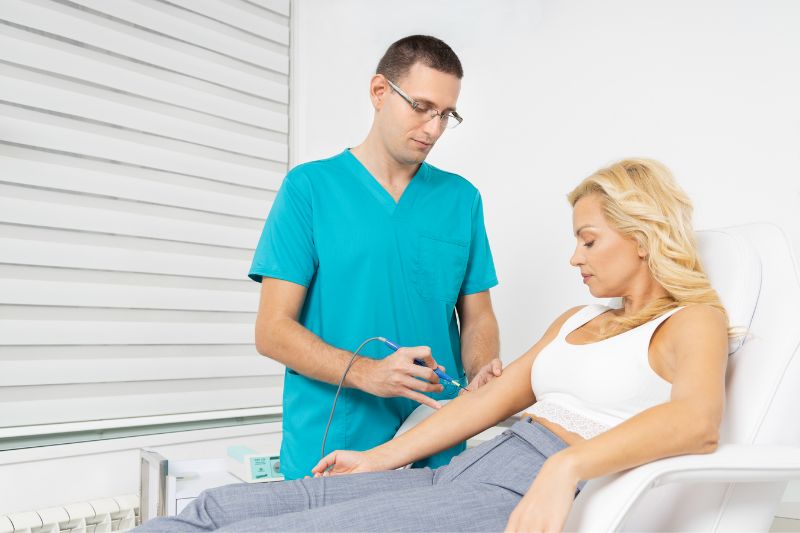Wart removal with radio waves is a painless and effective dermatosurgical method of removing warts from the skin or mucous membrane. The intervention is performed under local anesthesia, and the patient can return to daily activities immediately after the intervention.
Warts are benign skin growths caused by human papillomaviruses (HPV). As it is a viral disease, with a high possibility of transmission to other parts of the body and a close person, the removal of warts is necessary immediately after they are noticed.

Why do warts appear?
Warts are caused by direct contact with an infected person or through contaminated objects. HPV infection is facilitated by damage or injury to the skin. After a skin infection, there is a disruption of the arming of keratinocytes and the appearance of warty bumps on the skin, and several months can pass from the infection to the appearance of warts.
Warts can appear on any part of the body, but they most often appear on the hands, neck, décolletage, back and armpits. The appearance of warts on the eyelids is not rare either. They can be circular or cauliflower-shaped, but also flattened. Hanging warts have a stalk on which they hang and most often appear on the neck and in the armpit area, and their removal is very simple.
Removal of warts – radio waves, lasers and other methods
Wart removal with radio waves is the method of choice. Anesthesia is applied before the intervention, which makes wart removal completely painless. The energy of the radio waves leads to evaporation and the disappearance of the change, and if it is a matter of smaller warts immediately after removal, no trace remains. If the changes are larger, a small scab remains after removing the warts. In the following days, the scab falls off, leaving a pink mark that disappears in the following days without leaving any traces on the skin.
Laser removal of warts is carried out according to the same principle as radio wave, i.e. laser energy causes the wart to evaporate and disappear without a scar. The only disadvantage of this method compared to radio waves is the impossibility of removing warts directly around the eye.
What does radio wave removal of warts look like?
Many patients are concerned about whether wart removal is painful, but the treatment is completely painless thanks to local anesthesia. After the treatment, an antibacterial ointment or powder is applied, and a patch can be applied to larger changes after removal, which can be removed the next day. As we have already written, the recovery is quick and comes down to a scab that falls off in 7 days and leaves young, pinkish skin that matures and acquires a normal color in the following days.
How should I behave after removing warts?
You will receive precise instructions from your doctor. Usually, in the first days after the intervention, antibiotic ointment or powder is used after washing the area with soap, and after the scab falls off, regenerative creams such as Cicaplast b5 balm or Cicabio cream can be used for a faster disappearance of redness. During recovery, it is important not to touch the places where the thread changes were removed. Avoid dusty jobs, saunas, swimming pools and spas until the scab falls off. After the scab falls off, young skin is very sensitive to solar radiation, so if it is a sun-exposed area, it is necessary to use SPF50 for 1-2 months.
Are there other ways to remove warts?
Previously, removal of warts with liquid nitrogen (cryotherapy) was widely used. With cryotherapy, the changes are frozen and fall off. However, this method has numerous disadvantages, including significant damage to the surrounding tissue, the formation of scars, and the impossibility of treating deeper-seated warts.
Very small warts can be very carefully treated with keratolytic solutions such as salicylic acid. This treatment is carried out at home, and the product must be applied precisely to the wart, otherwise it can damage the surrounding, healthy skin and cause pigmentation.
How can I prevent warts?
Warts can be spread by shaking hands with someone who has warts or by coming into contact with surfaces that have the virus (gyms, communal showers, toilets). However, in order for the virus to be transmitted, there must be places where the skin is damaged, such as scratches, cuts, cracked skin, etc. The main prevention is to protect the damaged parts of the skin with a plaster, and to frequently wash hands and disinfect items for common use.
Removal of warts with radio waves – price?
For any additional questions, call us at 064/247-0707 .


